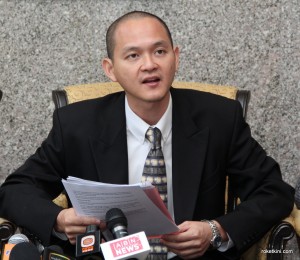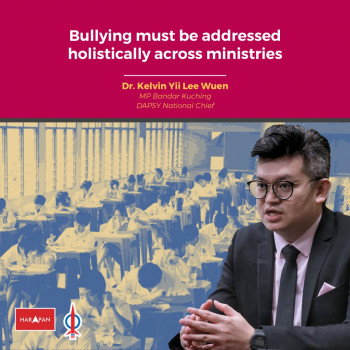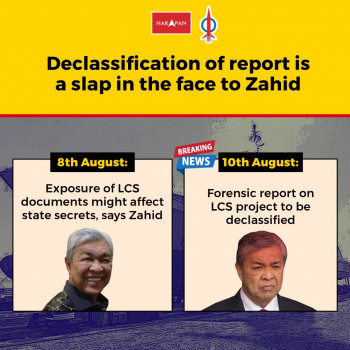by Dr Ong Kian Ming
 I was shocked when I read Minister for Urban-Well Being, Housing and Local Government, Abdul Rahman Dahlan, asked me to ‘google’ information on incinerators in Japan to find out more about safe Waste to Energy (WtE) plants.[1] As a minister, he should be more responsible with his words and actions rather than being so dismissive of the genuine concerns of residents and voters.
I was shocked when I read Minister for Urban-Well Being, Housing and Local Government, Abdul Rahman Dahlan, asked me to ‘google’ information on incinerators in Japan to find out more about safe Waste to Energy (WtE) plants.[1] As a minister, he should be more responsible with his words and actions rather than being so dismissive of the genuine concerns of residents and voters.
But since he asked me to use the ‘google’ approach, I decided to take his advice just to humour him. I googled “Japan Incinerator” and these were among the entries I found in the first page.
For the fourth entry, from the website of the US Department of Veteran Affairs[2]:
“Waste Incinerator in Atsugi, Japan – From 1985 to 2001, personnel at Naval Air Facility (NAF) Atsugi in Atsugi, Japan may have been exposed to environmental contaminants from off-base waste incinerators. The Shinkampo Incinerator Complex (SIC) was a combustion waste disposal equipped with incinerators that burned up to 90 tons of industrial and medical waste daily. Emissions included chemicals and other particulate matter. A private Japanese company owned and operated the business. The U.S. Navy found a potential for increased health risks and worked with the Japanese government to close the SIC. The incinerator was shut down in May 2001. If you are concerned about exposures at Atsugi, talk to your health care provider or local VA Environmental Health Coordinator.”
For the sixth entry, from a Hong Kong based website[3]:
Burning rubbish can immediately and drastically reduce waste volume by 90%. This seems to be a very convenient and easy solution. However, incineration cannot solve the long-term waste problem of Hong Kong at root. The proposed Integrated Waste Management Facilities can only handle 3,000 tonnes of solid waste daily, and municipal solid waste disposed of at landfills currently reaches 9,000 tonnes each day. Though the facilities may be large-scale, they still cannot meet the demands of local waste. If one incinerator cannot meet our demand, are we to build a second one? When the amount of rubbish increases, do we need yet another incinerator? In this case, we will only build more and more incinerators in future.
For the seventh entry, from the chemicals branch of the United Nations Environment Program (UNEP)[4]:
On average, Japan’s air contains nearly 10 times the amount of dioxin found in other industrialized countries. This statistic is largely attributed to the country’s penchant for waste incineration—the alleged source of roughly 90 percent of the estimated 5 kg or more of the toxic chemical released every year.
Taking the Minister’s own advice, I do not find overwhelming evidence from google that incinerators in Japan have a very good track record.
Since the Minister likes to dispense advice, I will take this opportunity to also offer him some of my own. Please read the “Environmental Impact Assessment – Guidelines for Solid Waste Incineration Plant” prepared by the Department of Environment, Ministry of Natural Resources and Environment, Malaysia, November 2012. This is the latest document prepared by the DOE which, unfortunately is NOT available online and therefore not accessible via google or the DOE website. I actually read the through the hard copy and I suggest that the Ministry flip through this document when he has some free time available. I would recommend that he turn to page 44, which says the following:
“In general, the minimum buffer distance adopted in Malaysia for solid waste incineration plant is 500m radius (measured from the boundary of plant). This distance follows the general guideline adopted for heavy industry under DOE”s Guidelines for Siting and Zoning of Industries. However, it should be noted that with the advancement in technology, the potential impacts could be minimised by applying best available techniques (BATs). Hence, the minimum buffer distance for SWI from any environmentally-sensitive areas (ESAs) such as residential areas of ecologically-sensitive areas should be provided at 500m (measured from the boundary of the plant) unless it could be proven that the distance could be minimised via scientific data, technology selection e.g. BAT i.e. modelling results for air pollutants dispersion etc.
In cases whereby the appropriate buffer distances could not be met and the project is critically required to be sited at the specific location, additional engineering and / or operational controls might be considered acceptable to reduce the zone of impact of potential pollution arising from the project. The reduction in zone of impact enabling the reduction of buffer distance shall be clearly demonstrated in the DEIA study in the form of findings backed up by sound technical judgement. However, this shall be referred to on a case-by-case basis and the onus shall be on the Project Proponent to select a suitable site prior to resorting to a site with insufficient buffer distance”
(Italics and Bold are my own)
The need for a buffer zone is clearly stated in the DOE guidelines. Just because there happen to be incinerators in Japan (or any other place in the word) which are situated next door to schools or hospitals does not mean that this should be accepted or is in accordance with the guidelines in Malaysia. Indeed, the selection of the site in Taman Beringin, Kepong, with an insufficient buffer distance already shows the willingness of the Ministry and the Minister to ride roughshod over DOE processes and guidelines.
The Minister was also reported to have said that the UTM site suitability study ‘may be outdated’ and that “The government cannot operate based on rumours and unfounded allegations, otherwise we can’t run the country”[5].
The Minister should be aware that the UTM site study was conducted in February 2013 and was given to the potential bidders for the Waste to Energy Plant in Taman Beringin. The identified site (Option B in the site study) has not been changed which means that the buzzer zone for the proposed WtE plant has not changed. This part of the site study, as far as I am aware, is not ‘outdated’.
Furthermore, the insufficient buffer zone was highlighted by the UTM site study, not based on rumours and unfounded allegations. In addition, the huge fire at the Tuas incinerator plant in Singapore in November 2013[6] and the huge explosion at a state of the art incinerator plant in Shanghai in December 2013 where one person was killed[7], actually happened and not based on rumours (I’ve included the link below so that the Minister doesn’t have to google it). This is why the buffer zone is in the guidelines – so that in the event of these accidents, injury and death to innocent residents can be avoided. The Minister should refer to these guidelines rather than taking the irresponsible and flippant approach in asking concerned residents and voters to use ‘google’.



